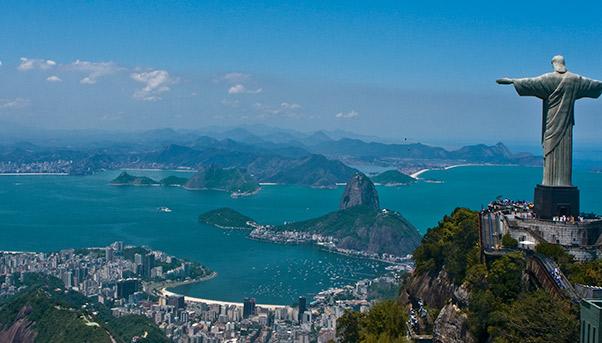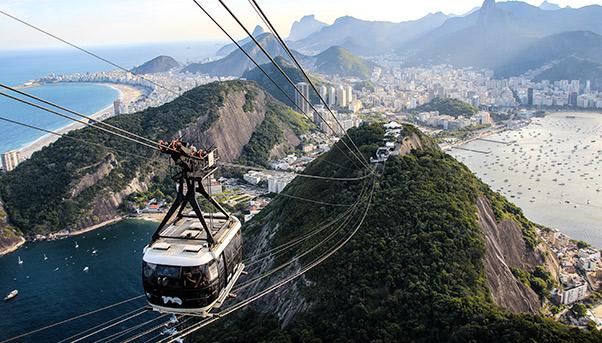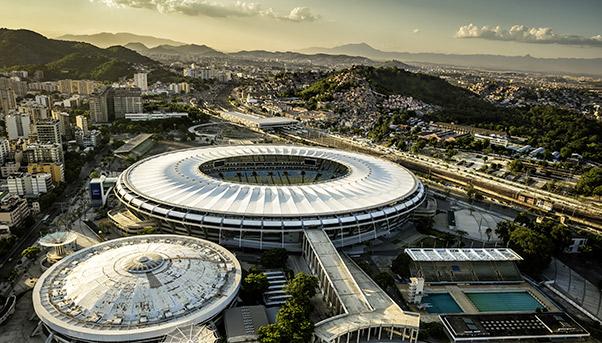
On August 5, all of the world’s attention will be transfixed on Christ the Redeemer. From the heights of the Corcovado Mountain, the view of the inaugural ceremony for the Rio 2016 Olympic Games will be priceless – just like that of the Olympic City and the massive public works conducted by the Brazilian government to prepare the country for the prestigious international event.
The final cost of this enormous financial effort, as recently disclosed by the Public Olympic Authority, will reach $10.76 billion, 25% more than what had been budgeted. This increase was mainly due to projects that were not foreseen in the original plan as well as inflation, according to the mayor of Rio de Janeiro, Eduardo Paes. This comes at a time when Brazil’s economy is experiencing one of the most difficult moments in years with a recession that is not letting up and inflation is exceeding 11%.
Hence the great financial effort being deployed to honor the Olympic promise. It is an effort that began in 2009 when Rio was selected to host the Games and has since endured through the years with the planning and construction of public works that are contributing to a renewal of the city, from transport networks to tourism structures to key districts.
Rewriting mobility in Rio
When the journey towards the Olympic Games in Rio de Janeiro began in 2009, the authorities were quick to explain how one of the problems to overcome was the traffic congestion in the city. Rio has six million residents living and working in a jagged landscape with beaches, mountains, densely populated neighborhoods and thick forests. To cross it, people take two hours. So the government and Games officials began a series of works to rewrite urban mobility across the city.

Transport infrastructure works
To do this, Brazilian authorities focused on four projects. The first and most ambitious was the construction of a new subway line – Line 4 – that is to have six stations going from Barra da Tijuca to Ipanema. It will be able to carry 230,000 passengers every day. It will stretch for more than 14 kilometres under the city, connecting the centre with the Olympic Park.
The three other projects are above ground, such as road with dedicated lanes for the Bus Rapid Transit (BRT): the Transcarioca, the Transoeste and the Transolimpica. These three public works, which bring together various parts of the city, as well as the subway line, cover 39 kilometres, 32 kilometres and 26 kilometres, respectively, significantly reducing commuting times. Then there is the light rail network whose trams will each be able to carry 450 people per passage along six lines that will run a course of 30 kilometres. All of the lines will be linked to BRT stations and the traditional metropolitan line.
Sports infrastructure
Other infrastructure helping with the modernization and construction of the necessary structures to host the Games that make up the Olympics range from the historic Maracanã stadium to tennis courts and boxing rings. The Olympic Park, which will host athletes for more than nine sporting events, is obviously at the heart of this enormous infrastructure project that has contributed to redesigning the face of the city.
Outside the Park, there are a number of other works throughout the city, some completed, others still ongoing. The Maravilha Port is definitely one of the most important. The area, which had suffered years of neglect, has been relaunched with an urban renewal project that includes not only public transportation but also works of great cultural prestige such as the Museum of Tomorrow, designed by the Spanish architect Santiago Calatrava. It is the country’s biggest urban project covering five million square metres, with sidewalks and bike paths, 15,000 new trees, urban services and a modern garbage collection system. All of these works will contribute to giving the world that will be coming to the Rio Games a new image of the city: modern, efficient and beautiful.

Impact of Games and investments
Notwithstanding the economic difficulties faced by Brazil in recent months, the multiplier effect in terms of wealth and business that can be expected from investments infrastructure for the Olympic Games should be substantial. The law firm Haddad and Haddad has calculated a multiplier of the sum of the investments equal to 4.26 points. This means that for every dollar invested as of 2017, a sum of $3.26 of additional wealth will be generated for a total value of $51.1 billion. It is obviously a very optimistic estimate. Many economists concur on much more modest numbers, indicating that the Games will have an economic impact of $10 billion. In any case, even though the Games in Rio exceeded the original cost estimates, the amount invested is still below the enormous expenses reached for previous games. In 2008, the Beijing Games cost $40 billion. For London 2012, $18 billion. Then there were the Sochi Winter Olympics for $50 billion.
The event’s economic impact for London, for example, was significant. A Grant Thornton Report estimates that the Games in the British capital generated an additional $17 billion of revenue, creating about 31,000 jobs. It is a figure that makes the Brazilian government hope for a similar effect to help it resolve the country’s crisis.

